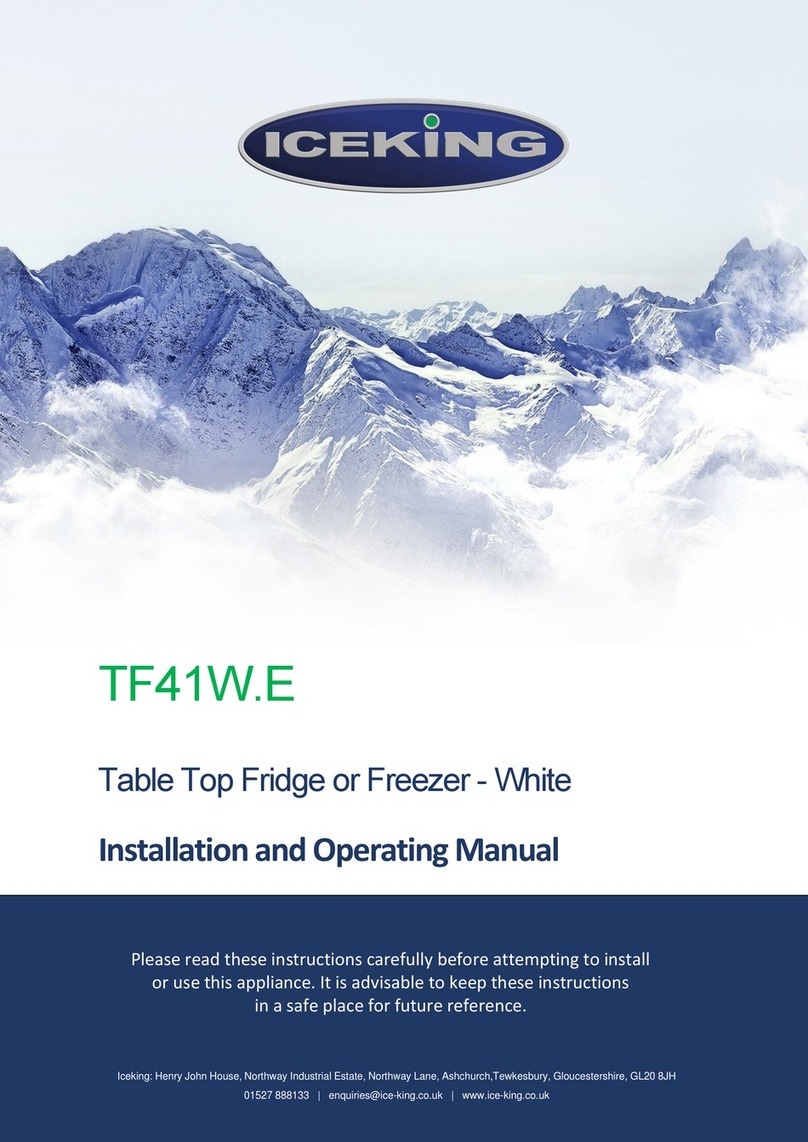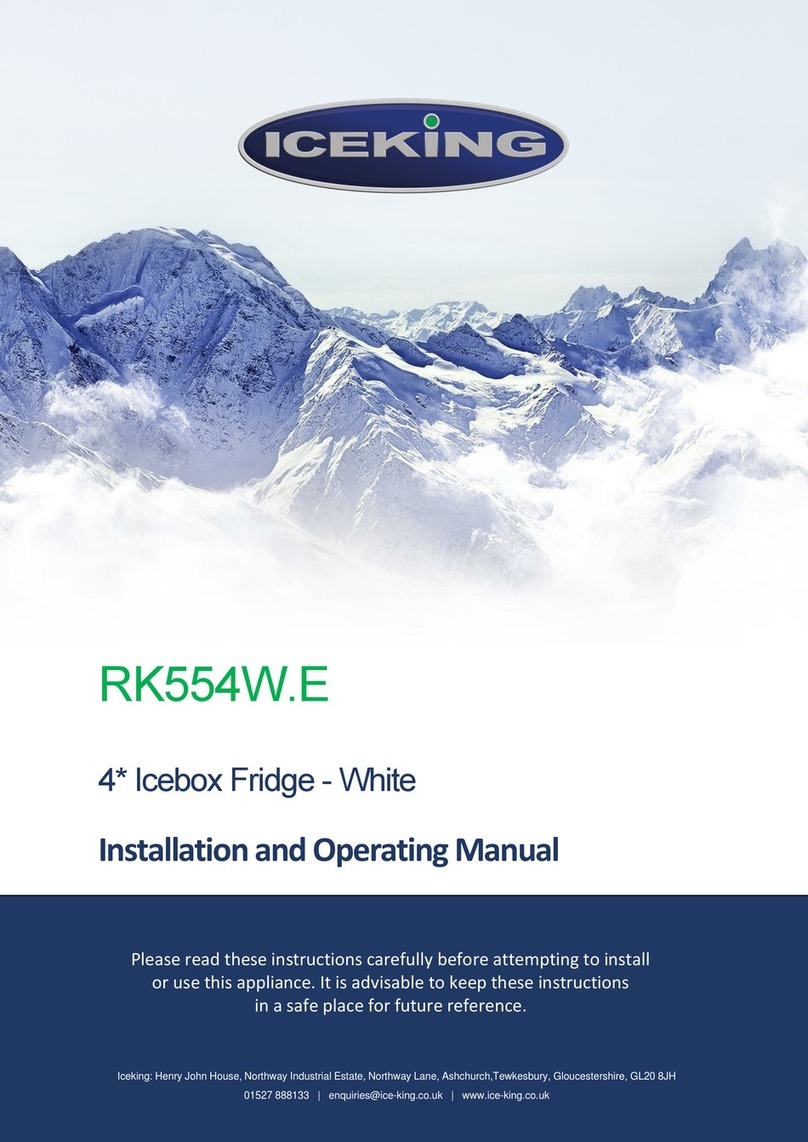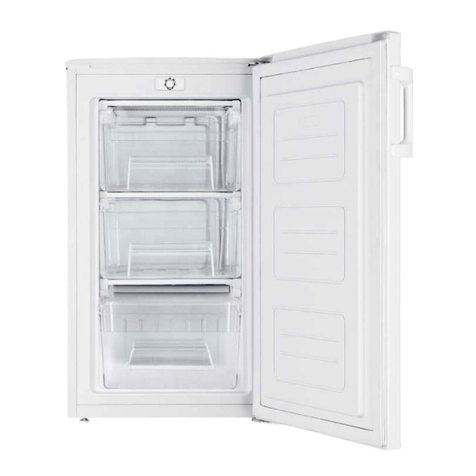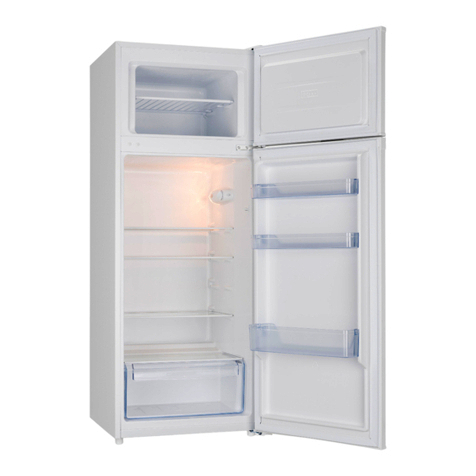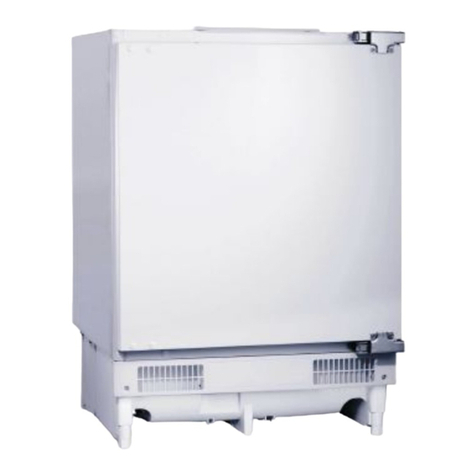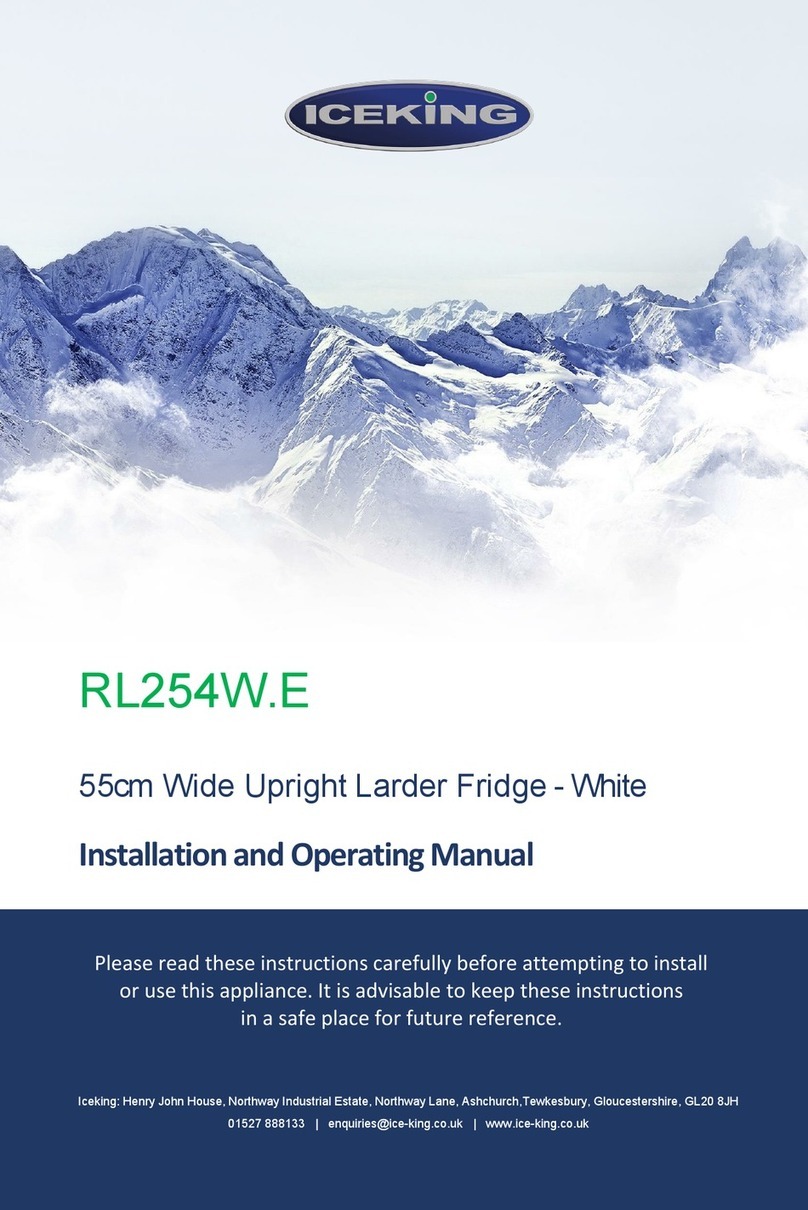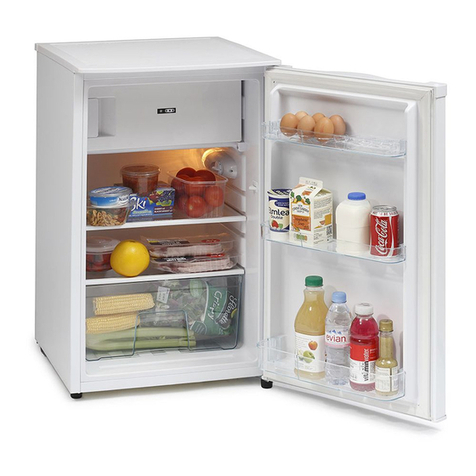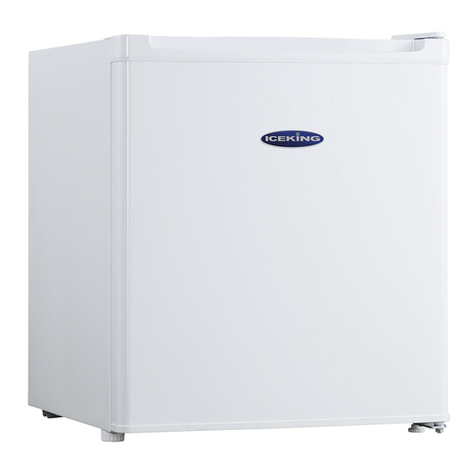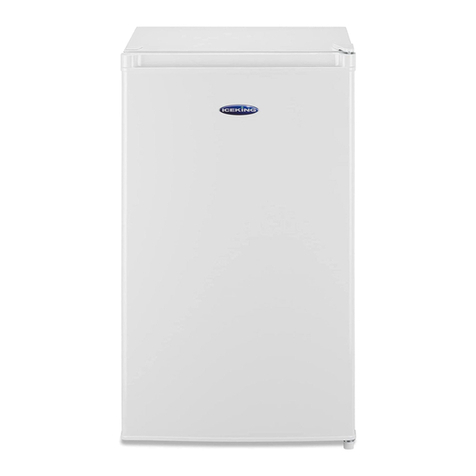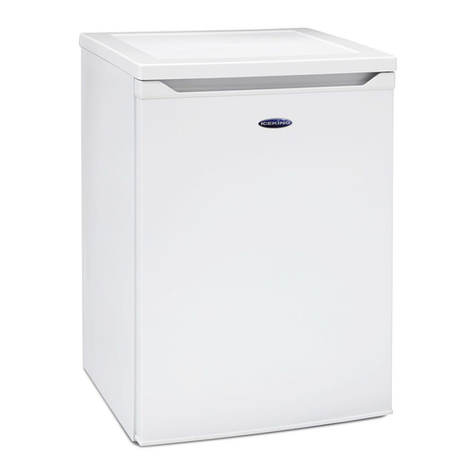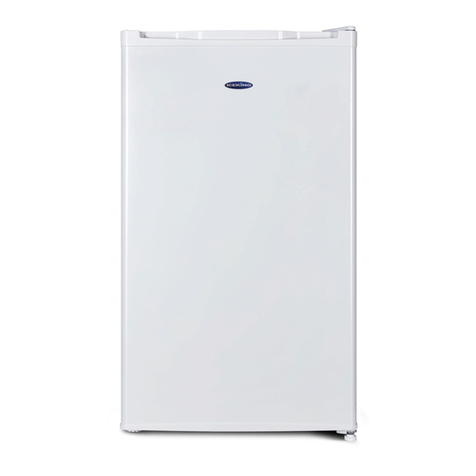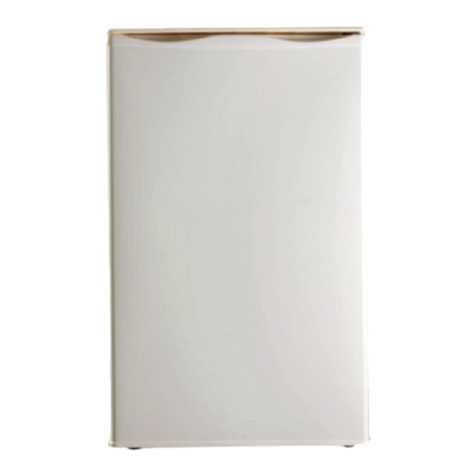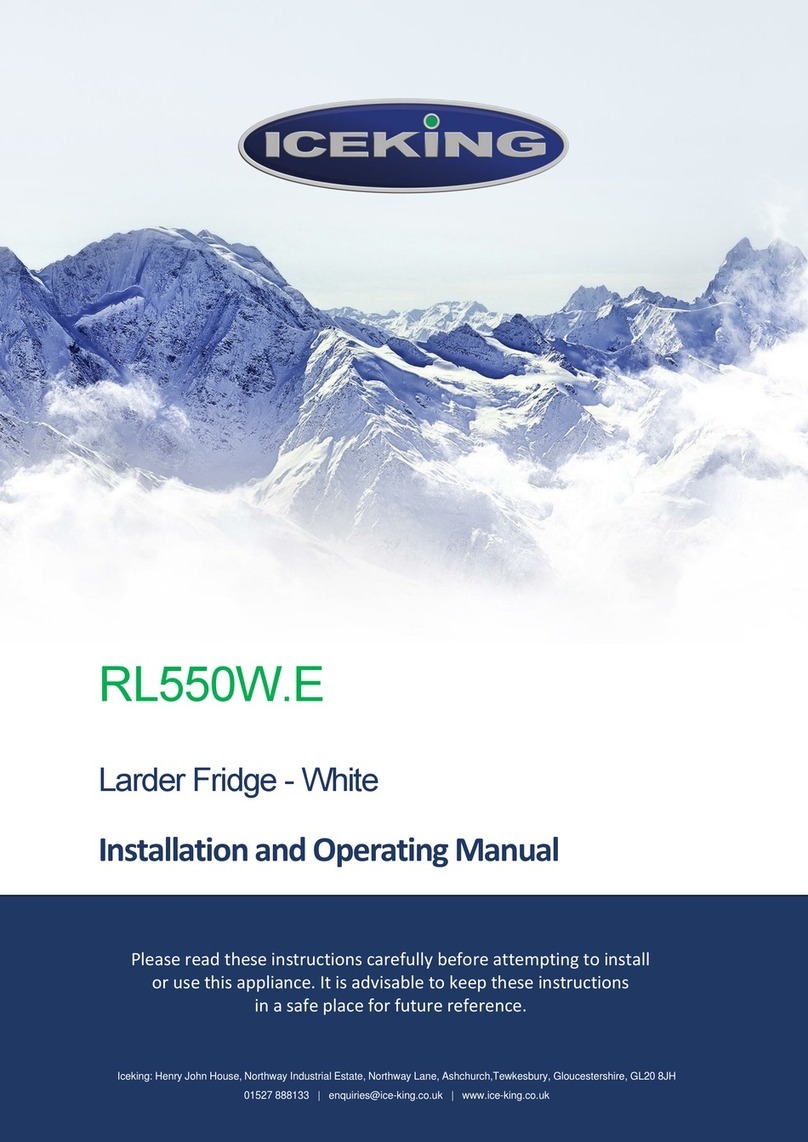
•Choose a dry and well-ventilated space.
•The appliance should be positioned so that the plug is easily accessible.
Before SwitchingOn
•Before using your appliance, add a teaspoon of bicarbonate of soda to warm
water and with a damp cloth wipe down all parts of the new appliance, then
repeat the process with a clean damp cloth and dry. (ensure the appliance is
not connected to the power when performing this task).
•Remove all transport tapes and foam protection pieces . Clean the interior with
a cloth dampened in lukewarm soap and water. Wipe with clean water and
wipe dry.
•There may be an odour when you first switch on the appliance, it will disappear
when the appliance starts to cool.
•When the appliance has been positioned, adjust the feet to ensure the unit is
stable. This is essential to ensure quiet running and proper door opening
/closing.
•Connect to the electrical socket but do not switch the power to the refrigerator
on for at least 3 hours. The coolant within the product needs time to settle after
it has been transported and put in to position, failure to do this will affect the
cooling performance of your appliance.
•Once the appliance has settled locate the thermostat dial on the product and
set to “5" and switch on the power. The compressor will begin to work. Close
the door.
•We recommend that the door is not opened for a minimum of 4 hours to allow
the appliance to reach the standard operating temperature.
•You may hear faint gurgling or bubbling sounds when the refrigerant is pumped
to the cooling system and through the coils or tubing at the rear of the
appliance. When the compressor is in operation you may hear a slight whirring
sound or pulsating noise. The thermostat controls the operation of the
compressor, and you may hear a slight click as it cycles in and out (this is
normal).
•To save energy, you should minimize the frequency and duration of door
opening.
6
